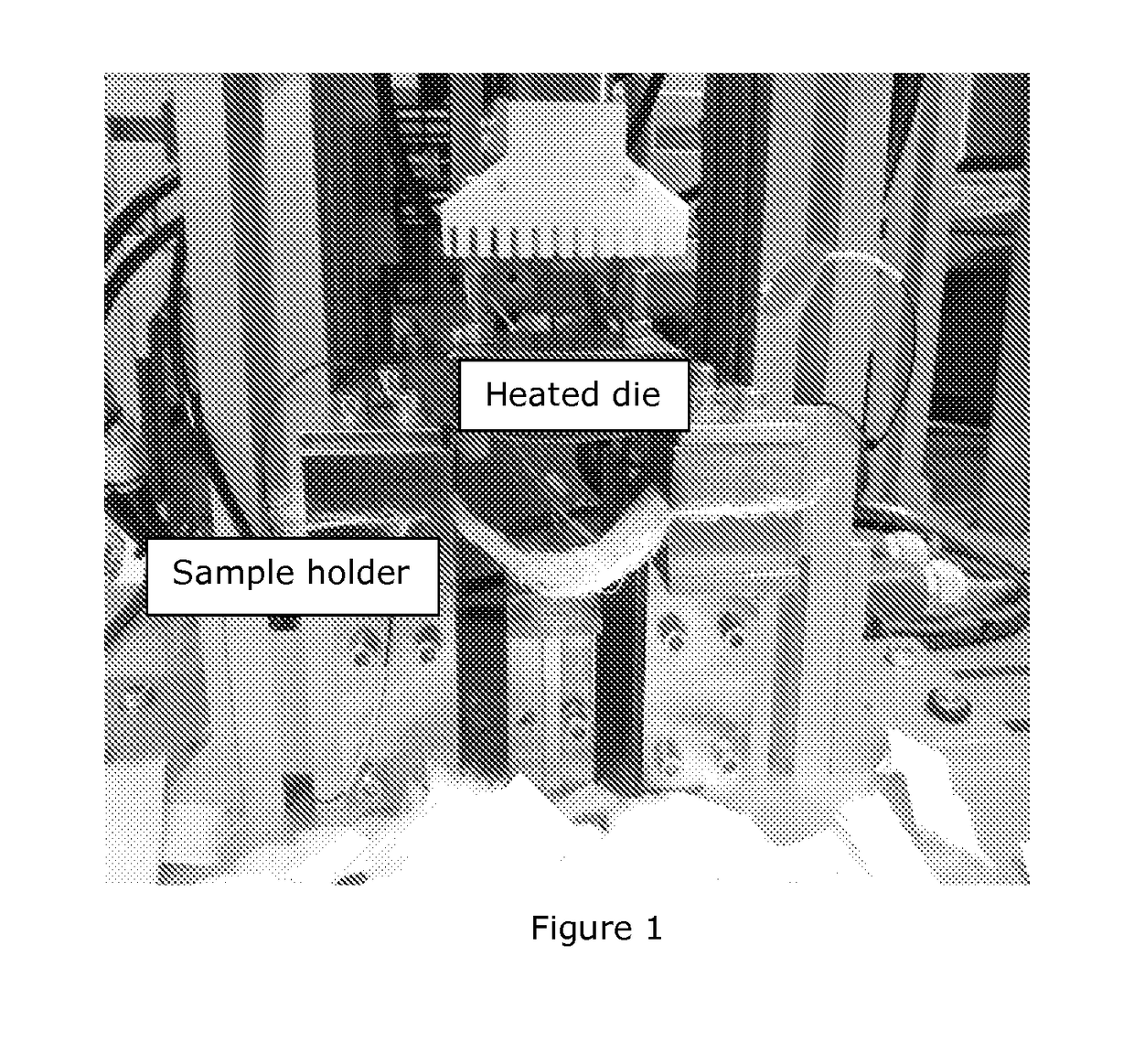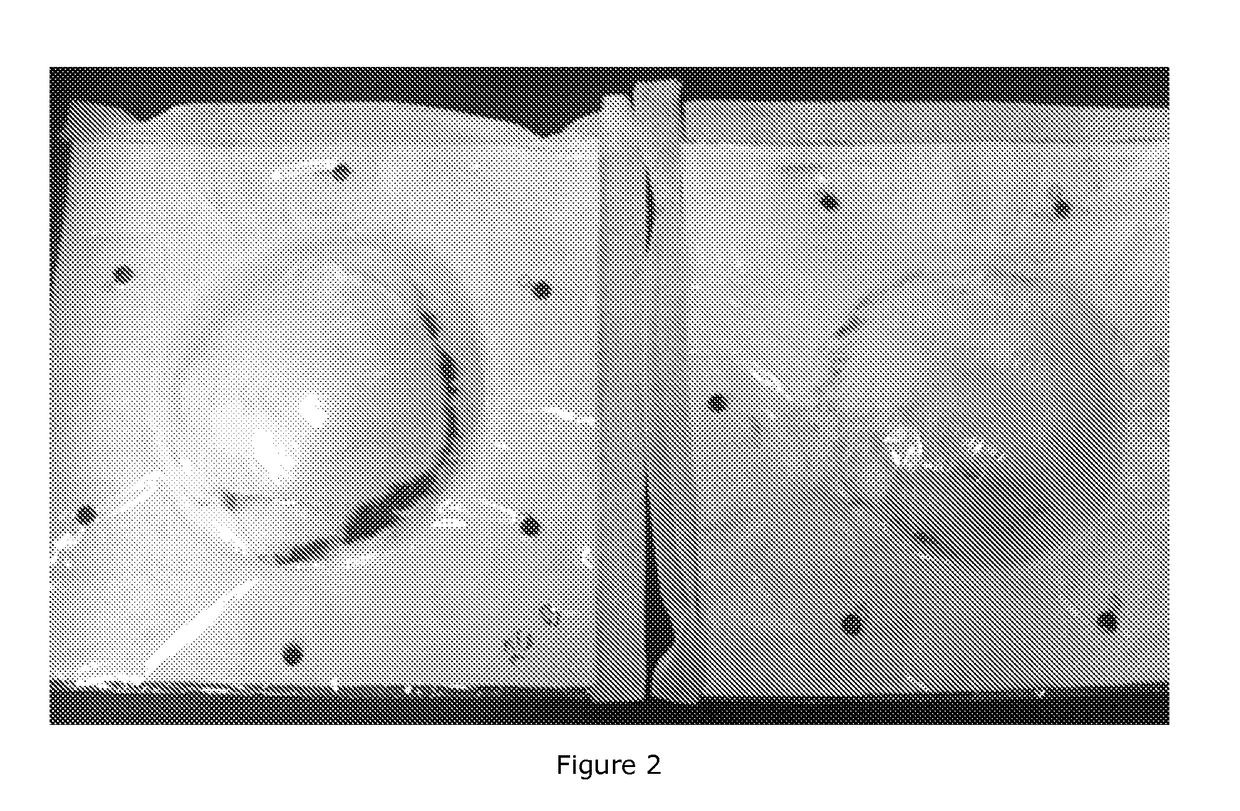Thermoplastic fibrous materials and a method of producing the same
a technology of fibrous materials and fibrous materials, which is applied in the field of thermoplastic fibrous materials or products, can solve the problems of limited use of fibers, particularly wood fibers, in the manufacture of moldable thermoplastic webs, and insufficient elongation of such fibrous materials, and achieves high elongation properties
- Summary
- Abstract
- Description
- Claims
- Application Information
AI Technical Summary
Benefits of technology
Problems solved by technology
Method used
Image
Examples
example 1
Strain at Break
[0098]Sheet Preparation
[0099]Sheets of thermoplastic fibrous material were prepared by a foam-forming method and dried in room temperature under restrained conditions against a plate. Viscose fibers of various lengths and unground bleached pine pulp were used as a fiber raw material. A polyurethane (PU) dispersion was used as a thermoplastic additive. A dispersion containing the fibers was mixed with a thermoplastic polymer dispersion. Thus, all raw materials were mixed together prior pouring the suspension on a wire and removing the water with the help of vacuum. The basis weight of the dried sheets varied between 240 and 350 g / m2.
[0100]Performance Characterization
[0101]Strains at break values of the prepared sheets were measured. The measurements were carried out with a device where a heated die with a curved surface presses the attached sample slip and the elongations at break values are registered. Measurements were performed in 120° C. The device is presented in ...
example 2
[0104]Sheet Preparation
[0105]Sheets of thermoplastic fibrous material were prepared as explained in example 1. Used raw materials were viscose and PU.
[0106]Performance Characterization
[0107]The influence of fiber length on the elongation properties of the prepared material was evaluated by laboratory scale thermoforming. Sample was attached to a mold which was placed between press plates. Temperature during forming was 100° C. and the mold depth 3 cm.
[0108]Results
[0109]Thermoforming results are presented in Figure. The increase of the viscose fiber length clearly improved the result.
[0110]FIG. 2 shows the thermoformed samples, which were prepared of viscose and PU: 6 mm viscose+PU (on the left) and 12 mm viscose+PU (on the right). Basis weight of the samples were about 240 g / m2 and PU amount about 7 weight % of the formed thermoplastic fibrous material.
PUM
| Property | Measurement | Unit |
|---|---|---|
| length | aaaaa | aaaaa |
| length | aaaaa | aaaaa |
| length | aaaaa | aaaaa |
Abstract
Description
Claims
Application Information
 Login to View More
Login to View More - R&D
- Intellectual Property
- Life Sciences
- Materials
- Tech Scout
- Unparalleled Data Quality
- Higher Quality Content
- 60% Fewer Hallucinations
Browse by: Latest US Patents, China's latest patents, Technical Efficacy Thesaurus, Application Domain, Technology Topic, Popular Technical Reports.
© 2025 PatSnap. All rights reserved.Legal|Privacy policy|Modern Slavery Act Transparency Statement|Sitemap|About US| Contact US: help@patsnap.com



